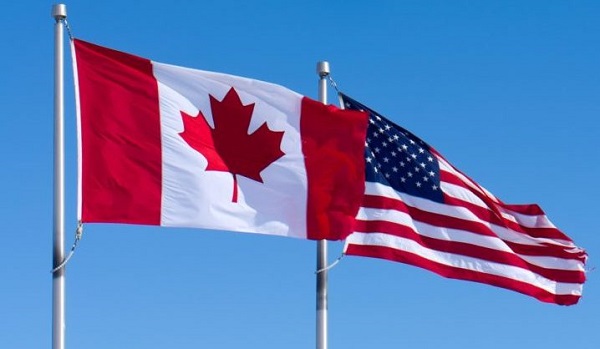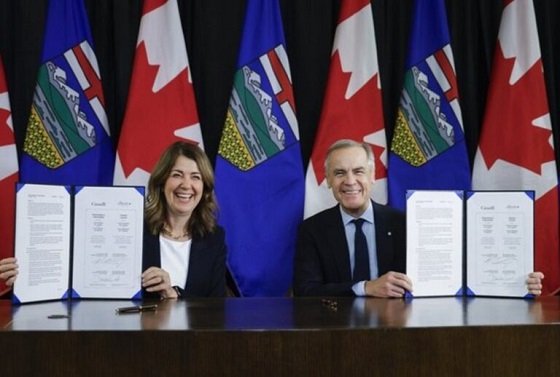Business
Base Policies on Reality – Not Myths, Models, Misinformation and Fearmongering

From the Frontier Centre for Public Policy
Donald Trump and JD Vance have a mandate on energy, economic, immigration and other issues that won them 50% of popular, 58% of electoral and 82% of US county votes.
On January 20 they will begin tackling the numerous problems bequeathed them by the Biden-Harris Administration and Washington Deep State: illegal immigration of criminals, terrorists and opportunists; outrageous government spending by bloated federal agencies; wars and crises across the globe; and federal and state politicians and bureaucrats determined to slow or stymie their every move.
Mr. Trump will let the DOGE out, to cut government waste. Pundits and political pros are offering advice across the board. My suggestions center on the “climate crisis” and the destructive policies it has justified.
1. First and foremost, withdraw the United States from the 2015 Paris climate straitjacket. Its terms and subsequent agreements require that the USA and other industrialized nations switch from fossil fuels to “clean renewable” energy and de-modernize agricultural and other practices, to eliminate “greenhouse gas” (GHG) emissions. That would bring blackouts, de-industrialization and job losses.
It would also mean now-rich nations must pay developing countries $300 billion per year for climate damage “compensation” and renewable energy financing. But China, India and other developing countries need not cut emissions and will continue using coal, oil and natural gas in ever-increasing quantities, to modernize, create vibrant economies and lift more people out of poverty. That would mean even zero fossil fuel use by Western nations would not reduce global atmospheric GHG levels at all.
Better yet, send the Paris document to Congress for Article II Senate advice and two-thirds consent. President Obama’s sly move of calling this accord a mere “agreement” that required no Senate “treaty” review cannot be countenanced. Paris was among the most far-reaching, impactful agreements in US history. It affects our energy, economy, jobs, living standards, healthcare, national security and more. It’s a treaty and should be treated as such.
2. Equally important, eliminate the institutionalized junk science, assertions and fearmongering that fossil fuel use has caused an existential climate crisis for people and planet. Begin by re-examining the 2009 Obama Environmental Protection Agency “Endangerment Finding” that carbon dioxide “pollution” threatens the American people’s health and welfare.
Fossil fuels provide 80% of America’s energy; raw materials for thousands of petrochemical products; and the foundation of our economy, health and welfare. Their emissions certainly contribute to the 0.04% CO2 in Earth’s atmosphere, but this miracle molecule enables and spurs plant growth, thereby feeding the animal kingdom and making nearly all life possible.
EPA’s convoluted finding defied science and reality. It allowed the Obama and Biden Administrations to justify biased climate “research,” anti-fossil fuel regulations, sprawling wind and solar installations, and the transformation of America’s entire energy system and economy.
The Endangerment Decision was likely the most “major federal action” in US history, yet it has no real statutory basis. It clearly defies the Supreme Court’s decisions in West Virginia v. EPA, Chevron v. Natural Resources Defense Council and Loper Bright Enterprises, Inc., v. Raimondo.
EPA Administrator Lee Zeldin should direct the agency to formally and publicly reexamine the secretive process that EPA employed to ensure its “endangerment” decision – with no contrarian science, evidence, questions or public hearings permitted to challenge its preordained edict. A fair, balanced, scientific review would demolish the faulty Finding and bring the agency into compliance with SCOTUS rulings.
The President-elect’s appointment of energy and environmental “czars” and National Energy Council will build on those important steps, help restore reality and common sense to America’s energy and climate policies, rein in other Biden-era regulations and executive actions, and advance Mr. Trump’s promise of US energy dominance and economic resurgence.
Other actions the new Administration and Congress should take include the following.
3. Utilize the Congressional Review Act to reverse eleventh-hour Biden-Harris regulatory sprees – such as its ban on further coal leasing in the Powder River Basin.
4. Open all US non-National-Park areas for no/low impact evaluation and exploration, to identify prospects warranting more detailed assessments for critically needed metals and minerals. Most of these public land areas were deliberately made off-limits to such evaluations by Congress, courts and the Deep State, making it impossible to weigh surface values against potential for world-class subsurface deposits.
China’s recent ban on exports of several vital metals and minerals underscores yet again why America must not rely on adversaries for raw materials critical for US defense, aerospace, battery, AI, wind, solar and other industries – especially when those materials could be found and developed in America, under the world’s best pollution control and environmental protection rules, technologies and practices.
5. Reopen the Delaware-sized “coastal plain” of Alaska’s South-Carolina-sized Arctic National Wildlife Refuge for oil and gas leasing, exploration and drilling. Congressional legislation in 2017 explicitly allowed those activities, but President Biden unilaterally cancelled all leases and permits in 2023.
6. Require that applicants for climate change research and modeling grants demonstrate that their previous models and studies have been confirmed by actual temperature, drought and extreme weather data and evidence; and provide computer codes and analyses so that reviewers can view and evaluate their work.
7. Define “sustainability” to reflect complete global life-cycle raw material requirements, mining and processing needs and impacts, energy required to produce raw materials and manufacture energy and other systems, and land, air and water pollution resulting from all those activities. This will ensure that wind, solar, battery, electric vehicle and other technologies are not classified as “clean, renewable and sustainable” merely because they don’t emit CO2 or pollution after they start operating.
8. End subsidies and fast-track permitting for wind and solar installations – especially offshore wind, where raw material requirements and costs are many times higher than for onshore turbines and far more excessive than that for combined-cycle gas generators.
9. Require that wind and solar projects, and associated backup battery and transmission line projects, meet the same environmental review standards and requirements as required for oil, gas, coal and metals mining, and nuclear projects, regarding local, regional and global air and water pollution, land and habitat destruction, wildlife disturbance and loss, and post-project equipment removal and land reclamation.
Even better, cancel the entire offshore wind program. Its electricity is weather-dependent and ultra-expensive, threatens wildlife and fisheries, and requires unjustifiable amounts of raw materials.
10. Expand and streamline programs to bring new nuclear power plants online, especially small modular reactors – to meet rapidly expanding needs for abundant, reliable, affordable electricity for data centers, artificial intelligence, and increasingly electrified households, technologies and industries.
11. Terminate Diversity Equity Inclusion, Environment Social Governance, and Environmental and Climate Justice programs, offices and funding. They only serve as twisted justifications for arbitrarily selecting preferred companies and communities that are often less qualified to serve public health and safety.
There is much more to be done. But this is a solid beginning for reducing or eliminating needless, excessive and harmful pseudo science, grants, policies, practices and regulations – and restoring government of, by and for the People.
Paul Driessen is senior policy analyst for the Committee For A Constructive Tomorrow and author of books and articles on energy, environment, climate and human rights issues.
Business
Some Of The Wackiest Things Featured In Rand Paul’s New Report Alleging $1,639,135,969,608 In Gov’t Waste


From the Daily Caller News Foundation
Republican Kentucky Sen. Rand Paul released the latest edition of his annual “Festivus” report Tuesday detailing over $1 trillion in alleged wasteful spending in the U.S. government throughout 2025.
The newly released report found an estimated $1,639,135,969,608 total in government waste over the past year. Paul, a prominent fiscal hawk who serves as the chairman of the Senate Homeland Security and Governmental Affairs Committee, said in a statement that “no matter how much taxpayer money Washington burns through, politicians can’t help but demand more.”
“Fiscal responsibility may not be the most crowded road, but it’s one I’ve walked year after year — and this holiday season will be no different,” Paul continued. “So, before we get to the Feats of Strength, it’s time for my Airing of (Spending) Grievances.”
Dear Readers:
As a nonprofit, we are dependent on the generosity of our readers.
Please consider making a small donation of any amount here.
Thank you!
The 2025 “Festivus” report highlighted a spate of instances of wasteful spending from the federal government, including the Department of Health and Human Services (HHS) spent $1.5 million on an “innovative multilevel strategy” to reduce drug use in “Latinx” communities through celebrity influencer campaigns, and also dished out $1.9 million on a “hybrid mobile phone family intervention” aiming to reduce childhood obesity among Latino families living in Los Angeles County.
The report also mentions that HHS spent more than $40 million on influencers to promote getting vaccinated against COVID-19 for racial and ethnic minority groups.
The State Department doled out $244,252 to Stand for Peace in Islamabad to produce a television cartoon series that teaches children in Pakistan how to combat climate change and also spent $1.5 million to promote American films, television shows and video games abroad, according to the report.
The Department of Veterans Affairs (VA) spent more than $1,079,360 teaching teenage ferrets to binge drink alcohol this year, according to Paul’s report.
The report found that the National Science Foundation (NSF) shelled out $497,200 on a “Video Game Challenge” for kids. The NSF and other federal agencies also paid $14,643,280 to make monkeys play a video game in the style of the “Price Is Right,” the report states.
Paul’s 2024 “Festivus” report similarly featured several instances of wasteful federal government spending, such as a Las Vegas pickleball complex and a cabaret show on ice.
The Trump administration has been attempting to uproot wasteful government spending and reduce the federal workforce this year. The administration’s cuts have shrunk the federal workforce to the smallest level in more than a decade, according to recent economic data.
Festivus is a humorous holiday observed annually on Dec. 23, dating back to a popular 1997 episode of the sitcom “Seinfeld.” Observance of the holiday notably includes an “airing of grievances,” per the “Seinfeld” episode of its origin.
Alberta
A Christmas wish list for health-care reform

From the Fraser Institute
By Nadeem Esmail and Mackenzie Moir
It’s an exciting time in Canadian health-care policy. But even the slew of new reforms in Alberta only go part of the way to using all the policy tools employed by high performing universal health-care systems.
For 2026, for the sake of Canadian patients, let’s hope Alberta stays the path on changes to how hospitals are paid and allowing some private purchases of health care, and that other provinces start to catch up.
While Alberta’s new reforms were welcome news this year, it’s clear Canada’s health-care system continued to struggle. Canadians were reminded by our annual comparison of health care systems that they pay for one of the developed world’s most expensive universal health-care systems, yet have some of the fewest physicians and hospital beds, while waiting in some of the longest queues.
And speaking of queues, wait times across Canada for non-emergency care reached the second-highest level ever measured at 28.6 weeks from general practitioner referral to actual treatment. That’s more than triple the wait of the early 1990s despite decades of government promises and spending commitments. Other work found that at least 23,746 patients died while waiting for care, and nearly 1.3 million Canadians left our overcrowded emergency rooms without being treated.
At least one province has shown a genuine willingness to do something about these problems.
The Smith government in Alberta announced early in the year that it would move towards paying hospitals per-patient treated as opposed to a fixed annual budget, a policy approach that Quebec has been working on for years. Albertans will also soon be able purchase, at least in a limited way, some diagnostic and surgical services for themselves, which is again already possible in Quebec. Alberta has also gone a step further by allowing physicians to work in both public and private settings.
While controversial in Canada, these approaches simply mirror what is being done in all of the developed world’s top-performing universal health-care systems. Australia, the Netherlands, Germany and Switzerland all pay their hospitals per patient treated, and allow patients the opportunity to purchase care privately if they wish. They all also have better and faster universally accessible health care than Canada’s provinces provide, while spending a little more (Switzerland) or less (Australia, Germany, the Netherlands) than we do.
While these reforms are clearly a step in the right direction, there’s more to be done.
Even if we include Alberta’s reforms, these countries still do some very important things differently.
Critically, all of these countries expect patients to pay a small amount for their universally accessible services. The reasoning is straightforward: we all spend our own money more carefully than we spend someone else’s, and patients will make more informed decisions about when and where it’s best to access the health-care system when they have to pay a little out of pocket.
The evidence around this policy is clear—with appropriate safeguards to protect the very ill and exemptions for lower-income and other vulnerable populations, the demand for outpatient healthcare services falls, reducing delays and freeing up resources for others.
Charging patients even small amounts for care would of course violate the Canada Health Act, but it would also emulate the approach of 100 per cent of the developed world’s top-performing health-care systems. In this case, violating outdated federal policy means better universal health care for Canadians.
These top-performing countries also see the private sector and innovative entrepreneurs as partners in delivering universal health care. A relationship that is far different from the limited individual contracts some provinces have with private clinics and surgical centres to provide care in Canada. In these other countries, even full-service hospitals are operated by private providers. Importantly, partnering with innovative private providers, even hospitals, to deliver universal health care does not violate the Canada Health Act.
So, while Alberta has made strides this past year moving towards the well-established higher performance policy approach followed elsewhere, the Smith government remains at least a couple steps short of truly adopting a more Australian or European approach for health care. And other provinces have yet to even get to where Alberta will soon be.
Let’s hope in 2026 that Alberta keeps moving towards a truly world class universal health-care experience for patients, and that the other provinces catch up.
-

 armed forces24 hours ago
armed forces24 hours agoOttawa’s Newly Released Defence Plan Crosses a Dangerous Line
-

 espionage23 hours ago
espionage23 hours agoCarney Floor Crossing Raises Counterintelligence Questions aimed at China, Former Senior Mountie Argues
-

 Health22 hours ago
Health22 hours agoAll 12 Vaccinated vs. Unvaccinated Studies Found the Same Thing: Unvaccinated Children Are Far Healthier
-

 Energy1 day ago
Energy1 day ago75 per cent of Canadians support the construction of new pipelines to the East Coast and British Columbia
-

 Opinion21 hours ago
Opinion21 hours agoPope Leo XIV’s Christmas night homily
-

 Energy2 days ago
Energy2 days agoThe Top News Stories That Shaped Canadian Energy in 2025 and Will Continue to Shape Canadian Energy in 2026
-

 armed forces21 hours ago
armed forces21 hours agoRemembering Afghanistan and the sacrifices of our military families
-

 Energy2 days ago
Energy2 days agoWestern Canada’s supply chain for Santa Claus





